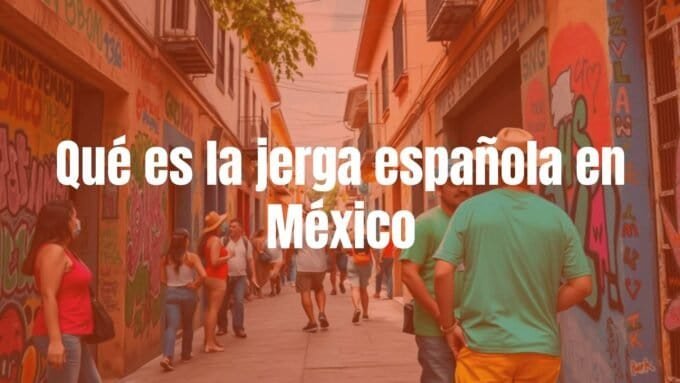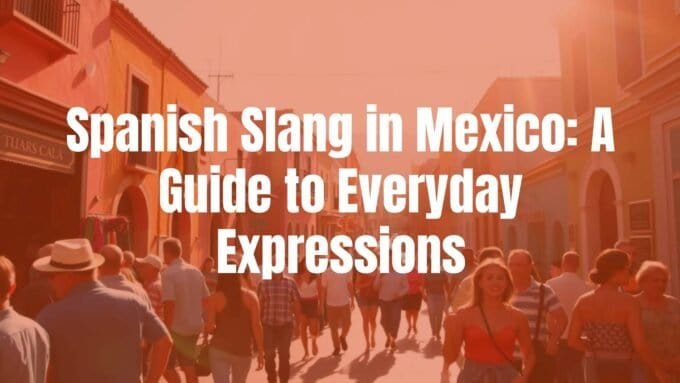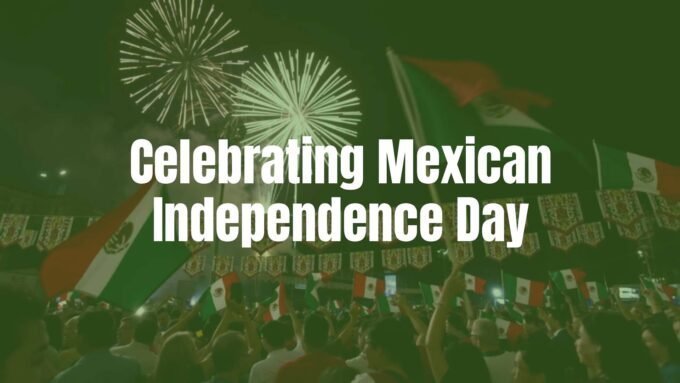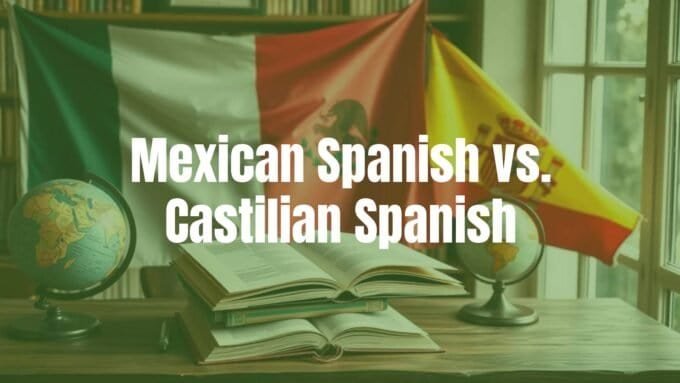Planning a trip to Mexico promises a memorable time full of color, scenery, and great food. To really reach the heart of the country and connect with its friendly people, a bit of Spanish helps a lot-especially Mexican Spanish. In places like Cancun’s big resorts, English often works, but trying the local language shows respect and opens the door to more real moments. Even a small set of phrases can turn your vacation from a quick visit into a richer experience. You’ll handle daily situations more easily, taste more local dishes, and even bargain with confidence in busy markets. Let’s look at the phrases that will make your time in Mexico shine.

Why Tourists Should Learn Mexican Spanish Phrases
Learning a few Mexican Spanish phrases is more than practical; it shows interest in the culture and people. You’ll see smiles when you greet a street vendor in Spanish, and small chats can start naturally. It takes you past the usual tourist spots and helps you find local places and real interactions many travelers miss.
Mexico is also a country with many languages. Spanish is spoken by over a hundred million people at home, school, work, and in tourist areas, but it isn’t the only national language. The government recognizes Spanish plus 68 indigenous languages, a sign of the country’s deep diversity. So while Spanish is a shared base, you’ll hear regional twists and local expressions everywhere.
How Mexican Spanish Differs from Other Types of Spanish
Spanish has many varieties, and Mexican Spanish is one of the best known. Grammar and a lot of words are the same across countries, but some details stand out, especially compared with the Spanish spoken in Spain (Castilian). For example, the letter “z” and soft “c” usually sound like “th” in Spain but like “s” in Mexico.
There are also word differences. A term common in Mexico may be rare or mean something else elsewhere. In Spain people often say “vale” for “okay,” while in Mexico you’ll hear “sale.” Slang and set phrases stand out even more. “¡Qué onda?” (What’s up?) and “¡Está muy chido!” (That’s really cool!) are very Mexican. Even basic words can change meaning: “camión” means bus in Mexico but can mean truck in other places.
| Topic | Mexico | Spain/Other |
|---|---|---|
| Pronunciation of “z” and soft “c” | s sound | th sound |
| Okay/Alright | sale | vale |
| camión | bus | truck (in many regions) |
| Greeting | ¿Qué onda? | ¿Qué tal? |
Benefits of Using Local Phrases During Your Trip
First, using local phrases helps you bond with people. Mexicans are warm hosts, and your effort will be appreciated. You may get honest tips on small restaurants or little-known sights and enjoy better conversations.
Next, it makes daily tasks smoother. Ordering, asking for directions, or bargaining at a market feels less scary and more fun. You’ll feel more confident. Getting a fair price on a souvenir or ordering tacos just how you like them are small wins that add up. Speaking some Spanish also helps you find spots that feel local instead of tourist-only places.
Common Misconceptions about Speaking Spanish in Mexico
A big myth is that you need to be fluent to get any value from Spanish. Not true. Even basic phrases go far, and people value the effort. Another myth says Spanish isn’t needed because everyone in tourist areas speaks English. Many do, but step a little away from the main areas and you’ll find Spanish is the norm. Using only English limits what you can do and who you can meet.
Some travelers fear making mistakes. Don’t. People in Mexico are usually patient and kind with learners. They’ll often help you and correct you gently. One traveler meant to say “I rode horses today” but said “I rode gentlemen today” (“caballos” vs. “caballeros”). Funny moments like that are part of learning and can lead to shared laughs and better connections. Don’t let fear stop you.
Key Mexican Spanish Phrases for Everyday Travel Situations
Getting around a new country is exciting, and a small set of go-to phrases makes it easier and more fun. From arrival to departure, these lines will help you connect, explore, and handle common issues with a smile.
Greetings and Polite Expressions
Politeness matters a lot in Mexico. A simple greeting sets a friendly tone. Try these:
- Hola: Hello. Good for most situations.
- Buenos días: Good morning (before noon).
- Buenas tardes: Good afternoon/evening (noon to dark).
- Buenas noches: Good evening/night (used at night).
- Por favor / Porfa: Please. “Porfa” is a common short form.
- Gracias: Thank you. Use it often. Said firmly, it can also mean “no thanks.”
- De nada: You’re welcome.
- Permiso / Con permiso: Excuse me (to pass by or step away). “Con permiso, necesito pasar.”
- Disculpe / Perdón: Excuse me / Sorry. Use “Disculpe” to get a stranger’s attention; “Perdón” works for “sorry.”
- ¿Mande?: A polite Mexican way to say “What?” or “Yes?” when you didn’t hear or someone called you.
These simple phrases build polite, friendly talk and quickly win goodwill.
Meeting New People and Socializing
Travel is better with new friends. Use these to introduce yourself and chat:
- Me llamo [Your Name]: My name is [Your Name].
- ¡Mucho gusto!: Nice to meet you!
- ¿Cómo estás?: How are you?
- Estoy bien, gracias: I’m fine, thank you.
- ¿Qué onda?: What’s up? Very common and informal.
- ¿De dónde eres?: Where are you from?
- Soy de [Your Country/City]: I am from [Your Country/City].
- ¿Habla usted inglés?: Do you speak English?
- No hablo español: I don’t speak Spanish.
A friendly handshake is common. In casual settings, some people greet with a hug or a cheek kiss.
Dining Out and Ordering Food
Mexican food is UNESCO Intangible Cultural Heritage, and tasting it is a highlight. Use these phrases to enjoy more:
- Una mesa para dos, porfa: A table for two, please.
- ¿Qué me sugiere?: What do you recommend?
- Quiero los tacos al pastor, por favor: I want the al pastor tacos, please.
- ¿Puedo pagar con tarjeta?: Can I pay by card?
- La cuenta, por favor / La cuenta, porfa: The check, please.
- Voy a pedir una chela: I’m going to order a beer. “Chela” is slang for beer.
- ¿Se puede tomar agua de la llave?: Is it okay to drink the tap water?
- Para comer aquí / Para llevar: For here / To go.
- Solamente media porción: Only a half portion.
- Con o sin queso: With or without cheese.
- Sal y pimiento: Salt and pepper.
- Soy vegano/vegetariano/celíaco: I am vegan/vegetarian/celiac. Very important for diets and allergies.

Tipping is common: 10-15% in most places. “Joven” is often used for a male server, and “Señorita” for a female server.
Shopping and Bargaining at Markets
Markets in Mexico are lively, and bargaining is normal. These phrases help:
- ¿Cuánto cuesta?: How much is it? You can also say “¿Qué precio tiene?”
- ¿Me lo deja más barato?: Can you give it to me for less?
- Está muy caro: It’s very expensive.
- Solo estoy viendo, gracias: I’m just looking, thank you.
- ¿Puedo probarme esto?: Can I try this on?
- ¿Tiene esto en otro color/talla?: Do you have this in another color/size?

Bargain with a smile. Keep it friendly and you’ll likely get a better price and a nicer chat.
Transportation and Asking for Directions
Getting around can be tricky at first. These will help you get around like a local:
- Estoy perdido/a: I’m lost (o for male, a for female).
- ¿Cómo llego a [Hotel Milenio]?: How do I get to [Hotel Milenio]?
- ¿Dónde está el baño?: Where is the bathroom?
- Gira a la izquierda/derecha: Turn left/right.
- Derecho: Straight ahead.
- Vamos en camión: Let’s take the bus. “Camión” means bus in Mexico.
- ¿Cuánto cuesta el pasaje?: How much is the fare?
- ¿Dónde me bajo?: Where do I get off?
- Voy al centro: I’m going downtown.
- ¿Dónde está el aeropuerto?: Where is the airport?
- ¿Dónde se ubica [X]?: Where is [X] located?
- ¿Se puede ir caminando?: Can I walk there?
- ¿Dónde puedo obtener un mapa del pueblo?: Where can I get a town map?
For longer trips by bus, knowing numbers helps a lot. “Uno para Guadalajara, por favor” means “One ticket to Guadalajara, please.”
Hotel Check-in and Accommodation Requests
Make your hotel stay smooth with these:
- Tengo una reservación: I have a reservation. Say it with your name.
- ¿A qué hora es la salida?: What time is check-out?
- ¿Puedo hacer check-out tarde?: Can I check out late?
- ¿Me da una toalla extra?: Can I have an extra towel?
- ¿Hay wifi gratis?: Is there free Wi-Fi?
- La llave de mi habitación: My room key.
- ¿Dónde está el desayuno?: Where is breakfast?
Being polite and clear goes a long way with hotel staff.
Emergencies and Medical Help
No one wants problems on a trip, but being ready helps. Use these in urgent moments:
- ¡Auxilio! / ¡Ayuda!: Help! “¡Ayuda!” is more common day to day.
- Necesito un doctor: I need a doctor.
- Busco una farmacia: I’m looking for a pharmacy.
- Estoy enfermo/a: I am sick (o for male, a for female).
- Me duele la cabeza: My head hurts. Swap in “el estómago” or “la garganta” as needed.
- ¿Me puede ayudar?: Can you help me?
- Llama a la patrulla: Call the police.
- Es una emergencia: It’s an emergency.
Keep local emergency numbers handy. These phrases can make a big difference in a stressful moment.
Mexican Slang and Unique Local Expressions
Beyond formal phrases, Mexican Spanish is full of colorful slang and set sayings that show local style. Learning a few makes your talk livelier and helps you blend in. Just watch the setting, since some slang is very informal or rude.
Popular Everyday Slang Words
Here are common slang words you’ll hear and can try:
- Chido: Cool / Awesome. “¡Qué chido!” means “How cool!”
- Güey (wey): Dude / Man. Super common among friends. Be careful with strangers or in formal settings.
- Chela: Beer. “Una chela” instead of “una cerveza.”
- ¿Neta?: Really? / For real? Used to show surprise or ask if something is true.
- Órale: Wow / Alright / Let’s go. Meaning changes with tone.
- Chambear: To work. “He estado chambeando” = “I’ve been working.”
- Fresa: Snobby / Fancy. “Ese restaurante es muy fresa.”
- Naco: Tacky / Low-class. Opposite vibe of “fresa.”
These words are part of daily talk and help your speech feel more local.
Phrases That Tourists Commonly Hear
These are classic lines you’ll run into often:
- ¡Qué onda!: What’s up? Very common informal greeting.
- ¡No manches!: No way! / Come on! Shows surprise or disbelief.
- Ahorita: From “ahora” (now), but can mean “right now,” “in a bit,” or “later.” Context matters.
- Sale: Okay / Deal. Common way to agree in Mexico.
- Diminutives “-ito/-ita”: Makes things sound smaller, friendlier, or softer: “cafecito,” “momentito,” “con cuidadito.”
These expressions are baked into everyday talk and will help you follow along and join in.
When and How to Use Slang Appropriately
Slang can help you fit in, but use it wisely. Try this approach:
- Start Small: Begin with safe picks like “chido,” “¿qué onda?,” and “órale.”
- Watch and Copy: Notice who uses which words and where. Match the tone and setting.
- Be Careful with Very Informal Terms: “Güey” is for friends; avoid with elders or in formal roles.
- Skip Vulgar Words: Strong insults like “pendejo” or “chinga tu madre” are not for visitors.
- Keep It Natural: If a word feels awkward, don’t use it. Clear, polite Spanish works great.
Your goal is better communication and connection, not perfect slang. Honest effort beats perfect accent.
Practical Tips for Using Mexican Spanish Phrases as a Tourist
Learning even a few phrases can feel hard at first, but with a simple plan and some confidence, you’ll be talking in no time. Every phrase you learn adds to a better trip.
Pronunciation Advice and Speaking with Confidence
Good pronunciation helps people understand you. Spanish is mostly phonetic, so letters sound the same most of the time. Focus on:
- Vowel Sounds: Five steady sounds: a (father), e (bed), i (machine), o (go), u (flute).
- Rolling Rs: The rolled “r” (as in “perro”) is tough. Practice, but don’t worry if it’s not perfect.
- Listen a Lot: Copy native speakers. Try music, podcasts, or casual chats around you.
- Speak Up: Practice out loud. Mistakes are normal. Most people in Mexico are patient and supportive.
Even small efforts in Spanish stand out and earn respect.
How to Handle Mistakes and Miscommunication
Errors will happen. Handle them calmly and with humor:
- Say Sorry Nicely: “Lo siento” or “Perdón” helps if you slip up.
- Ask to Repeat: “No entiendo” or “¿Puede repetirlo, por favor?” works well.
- Use Gestures: Pointing or simple drawings can help.
- Laugh It Off: Funny mix-ups can become good stories.
- Keep Tools Handy: A phrasebook or a translation app (camera mode is great for menus) can save time.
Don’t let confusion stop you. It’s part of the fun and often leads to friendly moments.
Resources for Learning More Mexican Spanish Phrases
If you want to grow your Mexican Spanish beyond the basics, try these:
- Language Learning Apps: Babbel has Mexican Spanish courses. DuoLingo and Memrise are handy for quick practice.
- Online Courses and Websites: Look for sites that focus on Mexican Spanish. Digital Polyglot has useful lists.
- Phrasebooks: A small book in your bag is great for quick checks.
- Media Immersion: Watch Mexican films or shows, listen to music, and read news or simple articles. Lyrics are great practice.
- Practice with Natives: Chat online or locally with Mexican Spanish speakers. iTalki can connect you with tutors.
- Travel Guides and Blogs: Blogs like No Hay Bronca or April Vera Lynn Travels share culture, language tips, and slang.
Steady practice, even 15 minutes a day, makes a big difference.
Frequently Asked Questions about Mexican Spanish for Tourists
As you get ready for Mexico, you might have questions about language and polite use. Here are quick answers to help you feel ready.
Should I Use Formal or Informal Phrases with Locals?
Choosing between formal “usted” and informal “tú” shows respect or closeness. With strangers, older people, police, hotel staff, or in formal places, “usted” is safer. For example, use “¿Cómo está usted?” instead of “¿Cómo estás?”
That said, many people in Mexico know learners start with “tú,” and they won’t mind. If someone uses “usted” with you, it’s a sign to do the same. When unsure, use “usted.” But don’t stress if you slip and say “tú” in a casual moment-the effort to speak Spanish matters more than perfect grammar.
Which Phrases Are Most Useful for First-Time Visitors?
For a smooth start, focus on basic politeness, getting help, directions, ordering, and simple introductions:
- Greetings and Politeness: “Hola,” “Buenos días/tardes/noches,” “Por favor,” “Gracias,” “De nada,” “Permiso/Disculpe.”
- Asking for Help: “¡Ayuda!” “¿Me puede ayudar?” and “No entiendo.”
- Navigation: “¿Dónde está…?” for places like “el baño,” “el aeropuerto,” or “el centro,” plus “izquierda,” “derecha,” and “derecho.”
- Ordering Food: “¿Cuánto cuesta?” “La cuenta, por favor,” and “Quiero…” + dish name.
- Basic Self-Introduction: “Me llamo…” and “¿De dónde eres?”
These cover most common situations. Aim for clear, friendly talk and you’ll do great.














Leave a comment